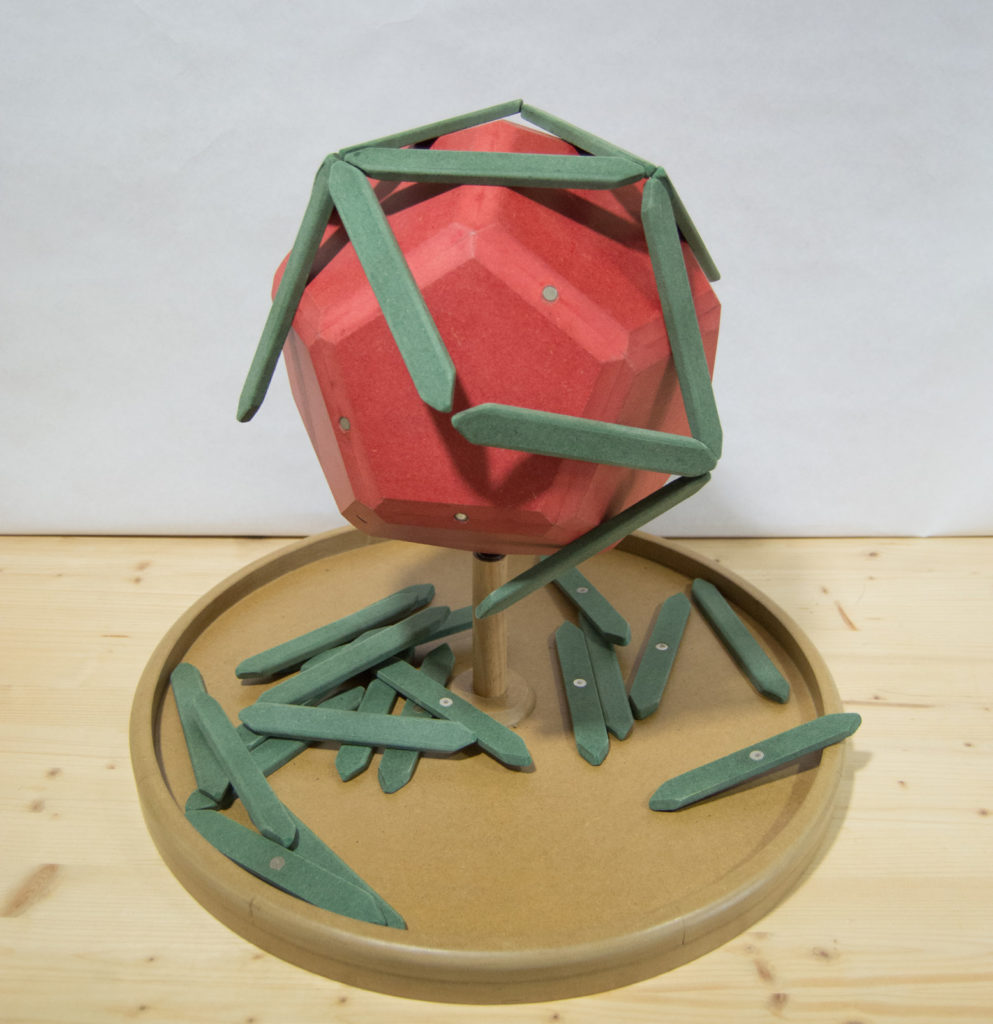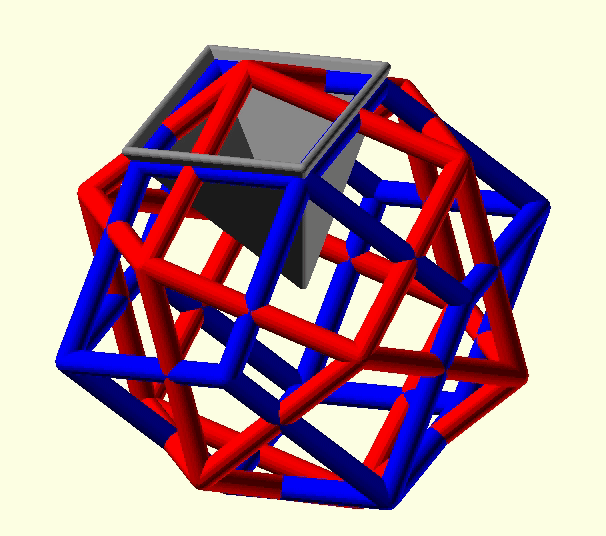Build icosaedre
Put the blue poles, perpendicular to the edges of the dodecaedre. You will see how a new polyhedron is formed, it is its dual.
- Hotel Area: Sala Pere Puig Adam
- Minimum age: from 6 years old.
- Required time: 5 minutes.
- Number of participants: One or more people
- Keywords: polyhedras
- Taxonomy: GEOMETRY

The red polyhedron that has served us as the basis, how many faces does it have?
It is called the Dodecaedre of the Greek dōdeka, 'twelve' and edra 'face'
The polyhedre you built with the blue sticks, how many faces does it have?
It is called the Icosaedre of the Greek eykosis, 'twenty' and edra 'face'
Compta quantes arestes té el dodecaedre i quantes l’icosaedre. Pots explicar-ho?
This process of building a polyhedron by placing perpendicular edges on top of another to obtain its dual, can always be done. You can see more examples in other parts of the museum.
Aquesta figura, impresa en 3D, que podeu descarregar en aquesta pàgina, mostra un altre exemple de poliedres duals amb les seves arestes perpendiculars. En vermell un cuboctaedre i en blau el dodecaedre ròmbic.

